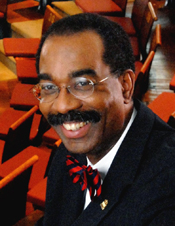 Every single student and employee on this campus has identified and pursued an interest or cause about which they are passionate. We all serve a common mission in the areas of education, research, clinical care, and community impact because of varying aptitudes we felt inclined to investigate. I applaud those who courageously followed their callings and now offer the School of Medicine the benefit of their scientific and medical talents.
Every single student and employee on this campus has identified and pursued an interest or cause about which they are passionate. We all serve a common mission in the areas of education, research, clinical care, and community impact because of varying aptitudes we felt inclined to investigate. I applaud those who courageously followed their callings and now offer the School of Medicine the benefit of their scientific and medical talents.
While passion plays a significant role in the success of our daily activities, discernment in directing those passions plays an even more vital role. A number of factors may affect our abilities in determining how best to apply our passions to our lives: exposure to different opportunities, experiences of success and failure, and relational influences, among others. We are fortunate that our work affords us the benefit of a collaborative community in which we can share and cultivate our skills and interests. The UMSOM offers many avenues in which to do so, including our annual Festival of Science, which will take place November 29, 2018 in Leadership Hall.
An annual School of Medicine event since 2013, the Festival of Science serves as the cornerstone of the University of Maryland Medicine’s Shared Vision 2020 and our Accelerating Innovation and Discovery in Medicine (ACCEL-Med) Initiative. When we developed our plan for the future, we identified the Festival of Science as a way to highlight the selective, strategic, and bold approaches of our research portfolio. Modeled after similar scientific symposia held at peer institutions across the country, the Festival of Science helps achieve ACCEL-Med’s purpose to increase the pace and scope of basic, translational, and clinical sciences research, and to dramatically impact and improve human health and well-being.
A distinguished collection of faculty will present their latest research within the theme of OMICS Biology: Basic, Translational, and Clinical Applications. This year offers a special opportunity to hear a presentation from an inaugural Dean’s Challenge Award recipient, Joana Carneiro da Silva, PhD, Associate Professor, Department of Microbiology and Immunology and Institute for Genome Sciences. Dr. da Silva and her colleagues will discuss the topic of Leveraging Parasite Population Genomics Data to Understand Malaria Vaccine Efficacy and Drug Resistance. We launched the Dean’s Challenge Award to accelerate research leadership and answer important questions underlying human health and disease. This initiative encouraged senior UMSOM scientists to catalyze the launch of major “Big Science” research programs within the school and across departments, centers, institutes, and programs.
As always, I look forward to everyone’s thoughtful discussions and the insightful feedback from the esteemed Scientific Advisory Council during the Festival. This year, Council members include:
- Ralph Snyderman, MD, Chair
- Rita Colwell, PhD
- George C. Hill, PhD
- Gilbert Omenn, MD, PhD
I also look forward to the keynote address from Huntington Willard, PhD, Director of Geisinger National Precision Health, Associate Chief Scientific Officer, and Howard Hughes Medical Institute Professor. This day-long gathering of our academic community offers us the opportunity to celebrate the groundbreaking research our colleagues are conducting. Having access to such a community as the School of Medicine offers a multitude of outlets — both organic and intentional — in which we can exchange ideas and progress, leading to breakthroughs and advancements. This year’s Festival promises to mark our commitment to the sciences once again and provide a valuable platform with which to continue fostering our passions.
As a privilege in which to participate and observe, the Festival of Science is only as beneficial as our community is represented. Vigor and enthusiasm in research contains an infectious element. When we gather in any kind of setting within our academic environment, the intensity of our zeal for the critical work that we spearhead and support only increases. I hope we can take advantage of the Festival’s unique forum that our staff and faculty work hard to organize and facilitate. While we look forward to the approaching season of holiday celebrations, we should remember to celebrate each other and ourselves as well in the life-changing work to which we so fortunately contribute. Let us take responsibility for continuing to move our passions along in directions of high impact for our community, our country, and our world.
In the relentless pursuit of excellence,
I am Sincerely yours,
E. Albert Reece, MD, PhD, MBA Vice President for Medical Affairs, University of Maryland John Z. and Akiko K. Bowers Distinguished Professor and Dean, University of Maryland School of Medicine
Community Outreach
 On July 20, several students from the YouthWork’s Summer Bioscience Internship Program (SBIP), at the University of Maryland, Baltimore, visited the Department of Physical Therapy and Rehabilitation Science. Nicole Willhide, MS, Director of Student Services, along with UMB graduate student and SBIP program coordinator Devona Quasie-Woode, coordinated the visit which included a 20-minute video about the profession and a tour during an anatomy class where first-year physical therapy students were dissecting cadavers.
On July 20, several students from the YouthWork’s Summer Bioscience Internship Program (SBIP), at the University of Maryland, Baltimore, visited the Department of Physical Therapy and Rehabilitation Science. Nicole Willhide, MS, Director of Student Services, along with UMB graduate student and SBIP program coordinator Devona Quasie-Woode, coordinated the visit which included a 20-minute video about the profession and a tour during an anatomy class where first-year physical therapy students were dissecting cadavers.
 The DPT Class of 2020, in the Department of Physical Therapy and Rehabilitation Science, has been busy with community service during their Medical Issues Block. Students recently performed community health screenings at a variety of locations: St. James Terrace Apts (Baltimore City), Mount Clare Overlook Apts (Baltimore City), Patapsco Overlook (Baltimore County), Hollins House (Baltimore City) and Catonsville Senior Center (Baltimore County). The health screenings included vital signs, balance screenings, foot screenings, musculoskeletal screenings, gait and functional mobility screenings, as well as whatever the participant needed. All of the health screenings took place in July and there were 99 participants screened.
The DPT Class of 2020, in the Department of Physical Therapy and Rehabilitation Science, has been busy with community service during their Medical Issues Block. Students recently performed community health screenings at a variety of locations: St. James Terrace Apts (Baltimore City), Mount Clare Overlook Apts (Baltimore City), Patapsco Overlook (Baltimore County), Hollins House (Baltimore City) and Catonsville Senior Center (Baltimore County). The health screenings included vital signs, balance screenings, foot screenings, musculoskeletal screenings, gait and functional mobility screenings, as well as whatever the participant needed. All of the health screenings took place in July and there were 99 participants screened.
Kudos to our colleagues who are experts in their fields and give their all to represent the School of Medicine!
 Gadi Alon, PT, PhD, Associate Professor Emeritus, Department of Physical Therapy and Rehabilitation Science, attended the 22nd Annual Conference of the International Functional Electrical Stimulation Society (IFESS), August 28–31, where he presented a workshop titled “FES in Pediatrics.”
Gadi Alon, PT, PhD, Associate Professor Emeritus, Department of Physical Therapy and Rehabilitation Science, attended the 22nd Annual Conference of the International Functional Electrical Stimulation Society (IFESS), August 28–31, where he presented a workshop titled “FES in Pediatrics.”
 Tracy Bale, PhD, Professor, Department of Pharmacology and Director, Center for Epigenetic Research in Child Health and Brain Development, was a plenary speaker at the 22nd Biennial Meeting of the International Society for Developmental Neuroscience, held in Nara, Japan, May 22–25. Dr. Bale’s talk was titled “Parental Stress and Epigenetic Programming of Offspring Neurodevelopment.” In addition, Dr. Bale presented a lecture titled “Novel Role of Epididymal Extracellular Vesicles in Signaling Paternal Stress” at the 2018 Gordon Research Conference on Mammalian Reproduction, held in Baraga, Italy in August.
Tracy Bale, PhD, Professor, Department of Pharmacology and Director, Center for Epigenetic Research in Child Health and Brain Development, was a plenary speaker at the 22nd Biennial Meeting of the International Society for Developmental Neuroscience, held in Nara, Japan, May 22–25. Dr. Bale’s talk was titled “Parental Stress and Epigenetic Programming of Offspring Neurodevelopment.” In addition, Dr. Bale presented a lecture titled “Novel Role of Epididymal Extracellular Vesicles in Signaling Paternal Stress” at the 2018 Gordon Research Conference on Mammalian Reproduction, held in Baraga, Italy in August.
 James Borrelli, PhD, Postdoctoral Fellow, Department of Physical Therapy and Rehabilitation Science, presented the poster: “Pertubation-Evoked Lateral Steps in Older Adults: Why Take Two Steps When One Will Do?” at the American Society of Biomechanics (ASB) Conference in Rochester, MN, August 8–12. Mary Rodgers, PT, PhD, FAPTA, FASB, FISB, Professor Emeritus, also from the Department of Physical Therapy and Rehabilitation Science and an ASB Fellow, presented at the women in science session, and co-authored the poster: “Mechanical Demand Imposed on the Shoulder During Propulsion in the Community” at the ASB Conference.
James Borrelli, PhD, Postdoctoral Fellow, Department of Physical Therapy and Rehabilitation Science, presented the poster: “Pertubation-Evoked Lateral Steps in Older Adults: Why Take Two Steps When One Will Do?” at the American Society of Biomechanics (ASB) Conference in Rochester, MN, August 8–12. Mary Rodgers, PT, PhD, FAPTA, FASB, FISB, Professor Emeritus, also from the Department of Physical Therapy and Rehabilitation Science and an ASB Fellow, presented at the women in science session, and co-authored the poster: “Mechanical Demand Imposed on the Shoulder During Propulsion in the Community” at the ASB Conference.
 Natalie Davis, MD, MMSc, Assistant Professor, Department of Pediatrics, was an invited speaker at the annual “Kidz-in-Motion” National Child Passenger Safety Conference held in Boulder, Colorado on August 29, where she ran a workshop related to her research on child passenger safety in the hospital setting.
Natalie Davis, MD, MMSc, Assistant Professor, Department of Pediatrics, was an invited speaker at the annual “Kidz-in-Motion” National Child Passenger Safety Conference held in Boulder, Colorado on August 29, where she ran a workshop related to her research on child passenger safety in the hospital setting.
 Vasken Dilsizian, MD, Professor, Department of Diagnostic Radiology & Nuclear Medicine, was the internal medicine grand rounds speaker at Medstar Harbor Hospital in Baltimore, where he presented “Everything You Need to Know: Myocardial Viability, Sarcoidosis, Inflammation, Infection Imaging” on August 10. In addition, Dr. Dilsizian, delivered an oral presentation entitled “PET Applications in Cardiac Implantable Device Infections and for Guiding Arrhythmia Management,” and chaired the plenary session entitled “Frontiers in the Application of Nuclear Techniques,” at the American Society of Nuclear Cardiology Annual Scientific Sessions, which was held in San Francisco, CA, on September 9.
Vasken Dilsizian, MD, Professor, Department of Diagnostic Radiology & Nuclear Medicine, was the internal medicine grand rounds speaker at Medstar Harbor Hospital in Baltimore, where he presented “Everything You Need to Know: Myocardial Viability, Sarcoidosis, Inflammation, Infection Imaging” on August 10. In addition, Dr. Dilsizian, delivered an oral presentation entitled “PET Applications in Cardiac Implantable Device Infections and for Guiding Arrhythmia Management,” and chaired the plenary session entitled “Frontiers in the Application of Nuclear Techniques,” at the American Society of Nuclear Cardiology Annual Scientific Sessions, which was held in San Francisco, CA, on September 9.
 Reha Erzurumlu, PhD, Professor, Department of Anatomy and Neurobiology, gave a talk on “Somatosensory Circuit Alterations in Neurodevelopmental Disorders,” at an international symposium in honor of Professor Patricia Gaspar at the Hôpital Universitaire Pitié-Salpêtrière in Paris, on October 19.
Reha Erzurumlu, PhD, Professor, Department of Anatomy and Neurobiology, gave a talk on “Somatosensory Circuit Alterations in Neurodevelopmental Disorders,” at an international symposium in honor of Professor Patricia Gaspar at the Hôpital Universitaire Pitié-Salpêtrière in Paris, on October 19.
 Robert Gallo, MD, the Homer & Martha Gudelsky Distinguished Professor in Medicine, Director, Institute of Human Virology, presented the keynote lecture entitled “HIV Today and Beyond: Perspectives from the Past and Prospects for the Future,” at the 2018 National Conference on HIV/ AIDS hosted by the Chinese Association of STD/AIDS Prevention and Control (CASAPC). The meeting was held in Kunming, China, September 27–29.
Robert Gallo, MD, the Homer & Martha Gudelsky Distinguished Professor in Medicine, Director, Institute of Human Virology, presented the keynote lecture entitled “HIV Today and Beyond: Perspectives from the Past and Prospects for the Future,” at the 2018 National Conference on HIV/ AIDS hosted by the Chinese Association of STD/AIDS Prevention and Control (CASAPC). The meeting was held in Kunming, China, September 27–29.
 Brian Mathur, PhD, Assistant Professor, Department of Pharmacology, presented as a Plenary Session speaker at the Annual Meeting for the Brazilian Society for Neurosciences in Behavior in Santos, Brazil in August. The title of his talk was “Cracking Crick’s Claustrum: Elucidating the Role of the Brain’s Mystery Nucleus.”
Brian Mathur, PhD, Assistant Professor, Department of Pharmacology, presented as a Plenary Session speaker at the Annual Meeting for the Brazilian Society for Neurosciences in Behavior in Santos, Brazil in August. The title of his talk was “Cracking Crick’s Claustrum: Elucidating the Role of the Brain’s Mystery Nucleus.”
 Andrea Meredith, PhD, Associate Professor, Department of Physiology, led the ‘Power Hour’ at the Ion Channels Gordon Research Conference (GRC) at Mt. Holyoke College, South Hadley, MA, on July 9. The GRC introduced the Power Hour at its conferences to give all attendees the opportunity to discuss challenges women face in science and to support the professional growth of women by providing an open forum for discussion and mentoring.
Andrea Meredith, PhD, Associate Professor, Department of Physiology, led the ‘Power Hour’ at the Ion Channels Gordon Research Conference (GRC) at Mt. Holyoke College, South Hadley, MA, on July 9. The GRC introduced the Power Hour at its conferences to give all attendees the opportunity to discuss challenges women face in science and to support the professional growth of women by providing an open forum for discussion and mentoring.
 Braxton Mitchell, PhD, MPH, Professor, and Jeffrey O’Connell, DPhil, Associate Professor, both from the Department of Medicine, are hosting the Cohorts for Heart and Aging Research in Genomic Epidemiology (CHARGE) Investigator meeting in Baltimore October 11–12.
Braxton Mitchell, PhD, MPH, Professor, and Jeffrey O’Connell, DPhil, Associate Professor, both from the Department of Medicine, are hosting the Cohorts for Heart and Aging Research in Genomic Epidemiology (CHARGE) Investigator meeting in Baltimore October 11–12.
 Kathleen Morrison, PhD, Postdoctoral Fellow, Department of Pharmacology, presented a lecture at the 12th Annual meeting of the Organization for the Study of Sex Differences, held in Atlanta, GA, in May. The topic of the talk was “Pubertal Stress Reprograms the Paraventricular Nucleus and HPA Axis Responsiveness in a Sex-specific Manner.”
Kathleen Morrison, PhD, Postdoctoral Fellow, Department of Pharmacology, presented a lecture at the 12th Annual meeting of the Organization for the Study of Sex Differences, held in Atlanta, GA, in May. The topic of the talk was “Pubertal Stress Reprograms the Paraventricular Nucleus and HPA Axis Responsiveness in a Sex-specific Manner.”
 Mark Rogers, PT, PhD, FAPTA, the George R. Hepburn Dynasplint Professor, Department of Physical Therapy and Rehabilitation Science, gave an invited presentation at the Progress in Clinical Motor Control: Neurorehabilitation Conference, which was held at Penn State University, July 23–25. His presentation was titled, “Posture-Locomotion and Clinical Motor Disorders Startled Off Balance: A Physiological Conflict in Aging.”
Mark Rogers, PT, PhD, FAPTA, the George R. Hepburn Dynasplint Professor, Department of Physical Therapy and Rehabilitation Science, gave an invited presentation at the Progress in Clinical Motor Control: Neurorehabilitation Conference, which was held at Penn State University, July 23–25. His presentation was titled, “Posture-Locomotion and Clinical Motor Disorders Startled Off Balance: A Physiological Conflict in Aging.”
 Michael Sikorski, Second-year MD-PhD Student, participated in the Global Genes David R. Cox Scholarship for Rare Compassion program. The program matches a student with a patient with a rare genetic condition and their family. According to Michael, the several months of visits and phone calls culminated in an essay contest for which he was awarded 2nd place for his essay submission titled “Team White.”
Michael Sikorski, Second-year MD-PhD Student, participated in the Global Genes David R. Cox Scholarship for Rare Compassion program. The program matches a student with a patient with a rare genetic condition and their family. According to Michael, the several months of visits and phone calls culminated in an essay contest for which he was awarded 2nd place for his essay submission titled “Team White.”
 Jacob Wynes, DPM, FACFAS, Assistant Professor, Department of Orthopaedics, presented at The National, which is the Annual Scientific Meeting of the American Podiatric Medical Association, held in National Harbor, Maryland in July. The titles of his presentations were “Lisfranc Fracture Dislocation, A Practical Approach to the Management of Charcot Deformity” and “The Rigid Pes Planus.” Separately, Dr. Wynes, presented “Mini-Open Ankle Arthrodesis” and “Rheumatoid Foot and Pan Metatarsal Head Excision” at the Texas Podiatric Medical Association Annual Conference in Galveston, Texas, in June.
Jacob Wynes, DPM, FACFAS, Assistant Professor, Department of Orthopaedics, presented at The National, which is the Annual Scientific Meeting of the American Podiatric Medical Association, held in National Harbor, Maryland in July. The titles of his presentations were “Lisfranc Fracture Dislocation, A Practical Approach to the Management of Charcot Deformity” and “The Rigid Pes Planus.” Separately, Dr. Wynes, presented “Mini-Open Ankle Arthrodesis” and “Rheumatoid Foot and Pan Metatarsal Head Excision” at the Texas Podiatric Medical Association Annual Conference in Galveston, Texas, in June.
 The Department of Radiation Oncology faculty members presented their research and innovations in a broad range of podium, poster, e-poster, educational, and other forums at the 60th annual meeting and exhibition of the American Association of Physicists in Medicine (AAPM), July 29–August 2 in Nashville, TN. With more than 40 presentations and additional appearances on panels and in educational sessions, the department was among the most well represented at the premier annual event for medical physicists in North America and an annual destination for hundreds of physicists from countries around the world. The theme of this year’s meeting was “Beyond the Future.”
The Department of Radiation Oncology faculty members presented their research and innovations in a broad range of podium, poster, e-poster, educational, and other forums at the 60th annual meeting and exhibition of the American Association of Physicists in Medicine (AAPM), July 29–August 2 in Nashville, TN. With more than 40 presentations and additional appearances on panels and in educational sessions, the department was among the most well represented at the premier annual event for medical physicists in North America and an annual destination for hundreds of physicists from countries around the world. The theme of this year’s meeting was “Beyond the Future.”
Congratulations to the following who have received honors!
 Kathleen Morrison, PhD, Postdoctoral Fellow, Department of Pharmacology, was honored in September with a Society for Neuroscience Trainee Professional Development Award. Additionally, Dr. Morrison was honored with the American College of Neuropsychopharmacology Travel Award in June.
Kathleen Morrison, PhD, Postdoctoral Fellow, Department of Pharmacology, was honored in September with a Society for Neuroscience Trainee Professional Development Award. Additionally, Dr. Morrison was honored with the American College of Neuropsychopharmacology Travel Award in June.
 Mohummad Minhaj Siddiqui, MD, Assistant Professor, Department of Surgery, was named as a 2018 Baltimore Business Journal “Top 40 under 40” Awardee.
Mohummad Minhaj Siddiqui, MD, Assistant Professor, Department of Surgery, was named as a 2018 Baltimore Business Journal “Top 40 under 40” Awardee.
 Paul Welling, MD, Professor, Department of Physiology, was named the Donald Seldin Lecturer at the American Heart Association (AHA) Annual Meeting on Hypertension in Chicago, IL on September 8, 2018. This is the highest honor of the AHA council on the Kidney and Cardiovascular Disease. Dr. Welling’s lecture described his group’s discoveries of a pathway that explains the profound effects of dietary potassium on blood pressure, and it’s implications for public health, and the development of new therapeutic strategies for hypertension, disorders of potassium balance, and kidney disease.
Paul Welling, MD, Professor, Department of Physiology, was named the Donald Seldin Lecturer at the American Heart Association (AHA) Annual Meeting on Hypertension in Chicago, IL on September 8, 2018. This is the highest honor of the AHA council on the Kidney and Cardiovascular Disease. Dr. Welling’s lecture described his group’s discoveries of a pathway that explains the profound effects of dietary potassium on blood pressure, and it’s implications for public health, and the development of new therapeutic strategies for hypertension, disorders of potassium balance, and kidney disease.
Congratulations to our very productive faculty on their recent grants and contracts!
 Brittany Aicher, MD, Resident, Department of Surgery, Center for Vascular and Inflammatory Diseases, received a two-year, $127,539 new postdoctoral fellowship grant from National Heart, Lung, And Blood Institute (NHLBI) for “Mesenteric Vasculopathy in LRP1 Deficient Mice.”
Brittany Aicher, MD, Resident, Department of Surgery, Center for Vascular and Inflammatory Diseases, received a two-year, $127,539 new postdoctoral fellowship grant from National Heart, Lung, And Blood Institute (NHLBI) for “Mesenteric Vasculopathy in LRP1 Deficient Mice.”
 Kathryn Hughes Barry, PhD, MPH, Assistant Professor, Department of Epidemiology & Public Health, received a five-year NCI K07 Career Development grant for “Epigenomic and Transcriptomic Markers of Aggressive Prostate Cancer Among African-American Men.”
Kathryn Hughes Barry, PhD, MPH, Assistant Professor, Department of Epidemiology & Public Health, received a five-year NCI K07 Career Development grant for “Epigenomic and Transcriptomic Markers of Aggressive Prostate Cancer Among African-American Men.”
 Rong Chen, PhD, Assistant Professor, Department of Diagnostic Radiology and Nuclear Medicine, received a three-year R01 grant totaling $796,201 from the National Institute of Neurological Disorders and Stroke (NINDS/NIH) to study “CRCNS: Real-time Neural Decoding for Calcium Imaging.”
Rong Chen, PhD, Assistant Professor, Department of Diagnostic Radiology and Nuclear Medicine, received a three-year R01 grant totaling $796,201 from the National Institute of Neurological Disorders and Stroke (NINDS/NIH) to study “CRCNS: Real-time Neural Decoding for Calcium Imaging.”
 Derik Davis, MD, Associate Professor, Department of Diagnostic Radiology and Nuclear Medicine received a $323,000, two-year diversity supplement grant from National Institute on Aging for “Quantitative MRI of the Shoulder in Older Adults: a Pilot Study to Determine Rotator Cuff Intramuscular Fatty Infiltration and Activities of Daily Living following Non-operative Treatment of Painful Full-thickness Rotator Cuff Tears.” Jay Magaziner, PhD, MSHyg, Professor and Chair, Department of Epidemiology & Public Health, is the principal investigator for this study.
Derik Davis, MD, Associate Professor, Department of Diagnostic Radiology and Nuclear Medicine received a $323,000, two-year diversity supplement grant from National Institute on Aging for “Quantitative MRI of the Shoulder in Older Adults: a Pilot Study to Determine Rotator Cuff Intramuscular Fatty Infiltration and Activities of Daily Living following Non-operative Treatment of Painful Full-thickness Rotator Cuff Tears.” Jay Magaziner, PhD, MSHyg, Professor and Chair, Department of Epidemiology & Public Health, is the principal investigator for this study.
 Roy Film, PT, MPT, DPT, OCS, FAAOMPT, Assistant Professor, Department of Physical Therapy and Rehabilitation Science, received funding by the Interprofessional Faculty Development Institute as a co-investigator on: “A Better Way to Manage Pain: An Interprofessional Student Symposium on Pain Management and Mitigating Risk for Opioid Misuse and Addiction.” Principal Investigators also include: Meredith McHugh, PhD, MSW, Assistant Professor, Department of Anatomy and Neurobiology; Christopher Welsh, MD, Associate Professor, Department of Psychiatry; Katherine Fornili, DNP, MPH, RN, CARN, FIAAN, School of Nursing; and Mary McPherson, PharmD, MA, BCPS, CPE, Professor, School of Pharmacy. The grant was submitted through University of Maryland, Baltimore (UMB), Center for Interprofessional Education, which will allow this team to represent UMB at a biannual conference workshop designed to facilitate the future of healthcare education via interprofessional educational experiences.
Roy Film, PT, MPT, DPT, OCS, FAAOMPT, Assistant Professor, Department of Physical Therapy and Rehabilitation Science, received funding by the Interprofessional Faculty Development Institute as a co-investigator on: “A Better Way to Manage Pain: An Interprofessional Student Symposium on Pain Management and Mitigating Risk for Opioid Misuse and Addiction.” Principal Investigators also include: Meredith McHugh, PhD, MSW, Assistant Professor, Department of Anatomy and Neurobiology; Christopher Welsh, MD, Associate Professor, Department of Psychiatry; Katherine Fornili, DNP, MPH, RN, CARN, FIAAN, School of Nursing; and Mary McPherson, PharmD, MA, BCPS, CPE, Professor, School of Pharmacy. The grant was submitted through University of Maryland, Baltimore (UMB), Center for Interprofessional Education, which will allow this team to represent UMB at a biannual conference workshop designed to facilitate the future of healthcare education via interprofessional educational experiences.
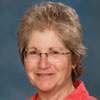 The Department of Pediatrics has been accepted as a pilot site for the new Mitochondrial Care Network (MCN). Under the leadership of Carol Greene, MD, FAAP, FACMG, Professor, Department of Pediatrics, this new program involves clinicians in many Departments including Elizabeth Streeten, MD, Clinical Professor, also from the Department of Pediatrics; Marcella Wozniak, MD, PhD, Associate Professor, Department of Neurology; Nicholas Pietris, MD, Assistant Professor, Department of Pediatrics; and William Regenold, MDCM, Associate Professor, Department of Psychiatry. The MCN is a joint effort of the Mitochondrial Medicine Society (MMS), the United Mitochondrial Disease Foundation (UMDF), MitoAction and Foundation for Mitochondrial Medicine (FMM) to formally unify clinicians who provide medical care to individuals with mitochondrial disease; to define, design and implement best practices in mitochondrial medicine, building on current consensus guidelines for mitochondrial diagnosis and care; and to optimize management and care to improve patient outcomes.
The Department of Pediatrics has been accepted as a pilot site for the new Mitochondrial Care Network (MCN). Under the leadership of Carol Greene, MD, FAAP, FACMG, Professor, Department of Pediatrics, this new program involves clinicians in many Departments including Elizabeth Streeten, MD, Clinical Professor, also from the Department of Pediatrics; Marcella Wozniak, MD, PhD, Associate Professor, Department of Neurology; Nicholas Pietris, MD, Assistant Professor, Department of Pediatrics; and William Regenold, MDCM, Associate Professor, Department of Psychiatry. The MCN is a joint effort of the Mitochondrial Medicine Society (MMS), the United Mitochondrial Disease Foundation (UMDF), MitoAction and Foundation for Mitochondrial Medicine (FMM) to formally unify clinicians who provide medical care to individuals with mitochondrial disease; to define, design and implement best practices in mitochondrial medicine, building on current consensus guidelines for mitochondrial diagnosis and care; and to optimize management and care to improve patient outcomes.
 Rao Gullapalli, PhD, MBA, Professor, Department of Diagnostic Radiology and Nuclear Medicine; Neeraj Badjatia, MD, MS, Professor, Department of Neurology; and Jerry Prince, PhD, Professor, Department of Biomedical Engineering, Johns Hopkins, are MPIs on an NIH RO1 grant studying longitudinal sub-thalamic structure and functional alterations in mild traumatic brain injury. The five-year grant from the National Institute of Neurological Disorders and Stroke has a total budget of $3,064,343. The team will develop novel MR imaging and multi-modal feature classification methods to segment the thalamus into its individual nuclei and test the hypothesis that post traumatic alterations in the structural and functional integrity of the thalamic nuclei will be associated with progression of specific neuropsychological and cognitive symptoms after mild traumatic brain injury.
Rao Gullapalli, PhD, MBA, Professor, Department of Diagnostic Radiology and Nuclear Medicine; Neeraj Badjatia, MD, MS, Professor, Department of Neurology; and Jerry Prince, PhD, Professor, Department of Biomedical Engineering, Johns Hopkins, are MPIs on an NIH RO1 grant studying longitudinal sub-thalamic structure and functional alterations in mild traumatic brain injury. The five-year grant from the National Institute of Neurological Disorders and Stroke has a total budget of $3,064,343. The team will develop novel MR imaging and multi-modal feature classification methods to segment the thalamus into its individual nuclei and test the hypothesis that post traumatic alterations in the structural and functional integrity of the thalamic nuclei will be associated with progression of specific neuropsychological and cognitive symptoms after mild traumatic brain injury.
 Anthony Harris, MD, MPH, Professor; Surbhi Leekha, MBBS, MPH, Associate Professor; and Daniel Morgan, MD, Associate Professor; all from the Department of Epidemiology & Public Health, received a two-year, $657,465 cooperative agreement from the Centers for Disease Control and Prevention for “Epidemiology of CRE and MRSA transmission: patient and organism factors.”
Anthony Harris, MD, MPH, Professor; Surbhi Leekha, MBBS, MPH, Associate Professor; and Daniel Morgan, MD, Associate Professor; all from the Department of Epidemiology & Public Health, received a two-year, $657,465 cooperative agreement from the Centers for Disease Control and Prevention for “Epidemiology of CRE and MRSA transmission: patient and organism factors.”
 Edward Herskovits, MD, Professor, Department of Diagnostic Radiology and Nuclear Medicine, received a two-year $424,875, R21 to study “Connectivity and Genetic Associations in Parkinson’s Disease.” Dr. Herkovits and his team will apply sophisticated methods for analyzing complex data sets, to help researchers understand the underlying changes in genes and brain structure in patients with Parkinson’s disease. They also will apply robust methods for automatically detecting subtypes among people with Parkinson’s disease, based on brain connectivity as revealed by MRI, or by genetic differences.
Edward Herskovits, MD, Professor, Department of Diagnostic Radiology and Nuclear Medicine, received a two-year $424,875, R21 to study “Connectivity and Genetic Associations in Parkinson’s Disease.” Dr. Herkovits and his team will apply sophisticated methods for analyzing complex data sets, to help researchers understand the underlying changes in genes and brain structure in patients with Parkinson’s disease. They also will apply robust methods for automatically detecting subtypes among people with Parkinson’s disease, based on brain connectivity as revealed by MRI, or by genetic differences.
 Achsah Keegan, PhD, Professor of Microbiology and Immunology, Center for Vascular and Inflammatory Diseases, received a five-year, $1,931,250 grant from National Institute of Allergy and Infectious Diseases (NIAID). Dr. Keegan’s study, “Role of Semaphorin 4A in Allergic Inflammation,” will analyze how the cell surface protein Semaphorin 4A suppresses the inflammatory response induced by inhaled allergens. This process is important to understand because allergic inflammation can initiate and amplify the symptoms of asthma. It is anticipated that data generated from this study will identify new targets for the treatment of asthma.
Achsah Keegan, PhD, Professor of Microbiology and Immunology, Center for Vascular and Inflammatory Diseases, received a five-year, $1,931,250 grant from National Institute of Allergy and Infectious Diseases (NIAID). Dr. Keegan’s study, “Role of Semaphorin 4A in Allergic Inflammation,” will analyze how the cell surface protein Semaphorin 4A suppresses the inflammatory response induced by inhaled allergens. This process is important to understand because allergic inflammation can initiate and amplify the symptoms of asthma. It is anticipated that data generated from this study will identify new targets for the treatment of asthma.
 Karen Kotloff, MD, Professor of Pediatrics, Associate Director for Clinical Research, Center for Vaccine Development and Global Health, was awarded $356,171, effective July 2019, to conduct Vaccine and Treatment Evaluation Units (VTEU) overall administration, clinical operations support and concept and protocol development, implementation and assays task area.
Karen Kotloff, MD, Professor of Pediatrics, Associate Director for Clinical Research, Center for Vaccine Development and Global Health, was awarded $356,171, effective July 2019, to conduct Vaccine and Treatment Evaluation Units (VTEU) overall administration, clinical operations support and concept and protocol development, implementation and assays task area.
 Wendy Lane, MD, MPH, Clinical Associate Professor, Department of Epidemiology & Public Health, received a one-year, $30,000 grant from the Maryland Department of Health for “B’More for Peaceful Motherhood.”
Wendy Lane, MD, MPH, Clinical Associate Professor, Department of Epidemiology & Public Health, received a one-year, $30,000 grant from the Maryland Department of Health for “B’More for Peaceful Motherhood.”
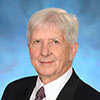 Dean Mann, MD, Professor, Department of Pathology and Microbiology and Immunology, received a $393,068 grant from the Hasumi International Research Foundation to develop Dendritic Cell Based Vaccines for Cancer.
Dean Mann, MD, Professor, Department of Pathology and Microbiology and Immunology, received a $393,068 grant from the Hasumi International Research Foundation to develop Dendritic Cell Based Vaccines for Cancer.
 Erin O’Connor, MD, Assistant Professor, Department of Diagnostic Radiology and Nuclear Medicine, along with James Becker, PhD, a Professor of Psychiatry, Psychology, and Neurology from the University of Pittsburgh, received a two-year reentry supplement grant from the National Institute on Aging for “Cardiovascular and HIV/AIDS Effects on Brain Structure/Function and Cognition.” The total budget is $264,779.
Erin O’Connor, MD, Assistant Professor, Department of Diagnostic Radiology and Nuclear Medicine, along with James Becker, PhD, a Professor of Psychiatry, Psychology, and Neurology from the University of Pittsburgh, received a two-year reentry supplement grant from the National Institute on Aging for “Cardiovascular and HIV/AIDS Effects on Brain Structure/Function and Cognition.” The total budget is $264,779.
 Charlene Quinn, PhD, RN, FAAN, Associate Professor, Department of Epidemiology & Public Health, received a one-year, $100,000 grant from the Maryland Industrial Partnerships and IC Med, LLC for “Older Adult/Caregiver Mobile Support Solutions.”
Charlene Quinn, PhD, RN, FAAN, Associate Professor, Department of Epidemiology & Public Health, received a one-year, $100,000 grant from the Maryland Industrial Partnerships and IC Med, LLC for “Older Adult/Caregiver Mobile Support Solutions.”
 Jacques Ravel, PhD, Professor, Department of Microbiology and Immunology, and Associate Director, Institute for Genome Sciences, received a two-year, $370,657 grant from the National Institute of Allergy and Infectious Diseases, to study “The Interaction Between Vaginal Microbiota, Immunogenetics and C. Trachomatis Susceptibility,” which is in collaboration with investigators from Institut Pasteur, Paris, France.
Jacques Ravel, PhD, Professor, Department of Microbiology and Immunology, and Associate Director, Institute for Genome Sciences, received a two-year, $370,657 grant from the National Institute of Allergy and Infectious Diseases, to study “The Interaction Between Vaginal Microbiota, Immunogenetics and C. Trachomatis Susceptibility,” which is in collaboration with investigators from Institut Pasteur, Paris, France.
 Saima Riazuddin, PhD, MPH, MBA, Professor, Department of Otorhinolaryngology Head & Neck Surgery, received a five-year $2,945,055 NIH R01 grant from the National Institute of Neurological Disorders and Stroke (NINDS/NIH) for “Genetics and Functional Studies of Autosomal Recessive Neurological Disorders.” Thomas Blanpied, PhD, Associate Professor, Department of Physiology, and Alexandros Poulopoulos, PhD, Assistant Professor, Department of Pharmacology, are co-investigators on this project.
Saima Riazuddin, PhD, MPH, MBA, Professor, Department of Otorhinolaryngology Head & Neck Surgery, received a five-year $2,945,055 NIH R01 grant from the National Institute of Neurological Disorders and Stroke (NINDS/NIH) for “Genetics and Functional Studies of Autosomal Recessive Neurological Disorders.” Thomas Blanpied, PhD, Associate Professor, Department of Physiology, and Alexandros Poulopoulos, PhD, Assistant Professor, Department of Pharmacology, are co-investigators on this project.
 Mark Rogers, PT, PhD, FAPTA, the George R. Hepburn Dynasplint Professor in the Department of Physical Therapy and Rehabilitation Science, received two years of funding from the National Institutes of Health (NIH) for “Neuromuscular and Biomechanical Control of Lower Limb Loading in Individuals with Chronic Stroke.” Dr. Rogers also received an NIH R01 grant award for “Hip Muscle Power, Lateral Balance Function, and Falls in Aging.”
Mark Rogers, PT, PhD, FAPTA, the George R. Hepburn Dynasplint Professor in the Department of Physical Therapy and Rehabilitation Science, received two years of funding from the National Institutes of Health (NIH) for “Neuromuscular and Biomechanical Control of Lower Limb Loading in Individuals with Chronic Stroke.” Dr. Rogers also received an NIH R01 grant award for “Hip Muscle Power, Lateral Balance Function, and Falls in Aging.”
 Kelly Westlake, PhD, MSc, PT, Assistant Professor, Department of Physical Therapy and Rehabilitation Science, received funding from the National Institutes of Health for “Influence of Attentional Control on Protective Arm Responses to Balance Perturbations in Older Adults.”
Kelly Westlake, PhD, MSc, PT, Assistant Professor, Department of Physical Therapy and Rehabilitation Science, received funding from the National Institutes of Health for “Influence of Attentional Control on Protective Arm Responses to Balance Perturbations in Older Adults.”
 Jill Whitall, PhD, Professor Emeritus and Sandy McCombe Waller, PT, PhD, MS, NCS, Associate Professor, both from the Department of Physical Therapy and Rehabilitation Science, have been awarded a one-year, Small Business Technology Transfer (STTR) grant (NIH STTR R41/R42) in collaboration with Stacy Bamberg (PI) from Verstride. The project title is “Veristrde STEP-R: An Interactive Verbal/Auditory Gait Trainer.”
Jill Whitall, PhD, Professor Emeritus and Sandy McCombe Waller, PT, PhD, MS, NCS, Associate Professor, both from the Department of Physical Therapy and Rehabilitation Science, have been awarded a one-year, Small Business Technology Transfer (STTR) grant (NIH STTR R41/R42) in collaboration with Stacy Bamberg (PI) from Verstride. The project title is “Veristrde STEP-R: An Interactive Verbal/Auditory Gait Trainer.”
 Li Zhang, PhD, Associate Professor, Department of Physiology and Center for Vascular and Inflammatory Diseases, received a three-year, $300,000 grant from the American Heart Association. Dr. Zhang’s study, “A Novel Radiation-Resistant CD11b-Expressing Leukocyte Population with Atheroprotective Activities,” will elucidate a novel resident macrophage population with atheroprotective activities. The mechanistic insights obtained from this study will also be used to design new therapeutic strategies for more effective intervention of atherosclerosis.
Li Zhang, PhD, Associate Professor, Department of Physiology and Center for Vascular and Inflammatory Diseases, received a three-year, $300,000 grant from the American Heart Association. Dr. Zhang’s study, “A Novel Radiation-Resistant CD11b-Expressing Leukocyte Population with Atheroprotective Activities,” will elucidate a novel resident macrophage population with atheroprotective activities. The mechanistic insights obtained from this study will also be used to design new therapeutic strategies for more effective intervention of atherosclerosis.
Hats off to those who have been published!
 Selwan Abdullah, MD, Fourth-year Resident and Jane Kim, MD, Assistant Professor, both from the Department of Diagnostic Radiology and Nuclear Medicine, were among the co-authors of “Is the Scout Out? The Utility of Scout Radiographs in the Pediatric Upper Gastrointestinal Exam,” published in the Journal of Pediatric Gastroenterology and Nutrition on August 1, 2018.
Selwan Abdullah, MD, Fourth-year Resident and Jane Kim, MD, Assistant Professor, both from the Department of Diagnostic Radiology and Nuclear Medicine, were among the co-authors of “Is the Scout Out? The Utility of Scout Radiographs in the Pediatric Upper Gastrointestinal Exam,” published in the Journal of Pediatric Gastroenterology and Nutrition on August 1, 2018.
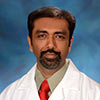 Nabeel Akhter, MBBS, Assistant Professor, and Vahid Etezadi, MD, Assistant Professor, both from the Department of Diagnostic Radiology and Nuclear Medicine, were among the co-authors of “Correlation of Radiation Dose and Activity with Clinical Outcomes in Metastatic Colorectal Cancer After Selective Internal Radiation Therapy Using Yttrium-90 Resin Microsphere,” published in Nuclear Medicine Communications on August 17, 2018.
Nabeel Akhter, MBBS, Assistant Professor, and Vahid Etezadi, MD, Assistant Professor, both from the Department of Diagnostic Radiology and Nuclear Medicine, were among the co-authors of “Correlation of Radiation Dose and Activity with Clinical Outcomes in Metastatic Colorectal Cancer After Selective Internal Radiation Therapy Using Yttrium-90 Resin Microsphere,” published in Nuclear Medicine Communications on August 17, 2018.
 Abdulaziz Alburaih, MD, Adjunct Assistant Professor, and Michael Witting, MD, MS, Professor, both from the Department of Emergency Medicine, published the article titled “Effectiveness of a Rural Emergency Department (ED)-Based Pain Contract on ED Visits Among ED Frequent Users” in the September issue of The Journal of Emergency Medicine.
Abdulaziz Alburaih, MD, Adjunct Assistant Professor, and Michael Witting, MD, MS, Professor, both from the Department of Emergency Medicine, published the article titled “Effectiveness of a Rural Emergency Department (ED)-Based Pain Contract on ED Visits Among ED Frequent Users” in the September issue of The Journal of Emergency Medicine.
 Neha Amin, MD, Assistant Professor, Department of Radiation Oncology, was a co-author of “Radiation Oncology, Hyperthermia for Chest Wall Recurrences,” e-published in StatPearls on July 15, 2018.
Neha Amin, MD, Assistant Professor, Department of Radiation Oncology, was a co-author of “Radiation Oncology, Hyperthermia for Chest Wall Recurrences,” e-published in StatPearls on July 15, 2018.
 Mary Bollinger, DO, Professor, Department of Pediatrics, was among the co-authors of “Very Poorly Controlled Asthma in Urban Minority Children: Lessons Learned,” published in the May-June 2018 issue of the Journal of Allergy Clinical Immunology in Practice.
Mary Bollinger, DO, Professor, Department of Pediatrics, was among the co-authors of “Very Poorly Controlled Asthma in Urban Minority Children: Lessons Learned,” published in the May-June 2018 issue of the Journal of Allergy Clinical Immunology in Practice.
 Donna Calu, PhD, Assistant Professor, Department of Anatomy and Neurobiology, was senior author of “Cannabinoid Receptor-1 Signaling Contributions to Sign-Tracking and Conditioned Reinforcement in Rats,” published in Psychopharmacology on August 14, 2018. Joseph Cheer, PhD, Professor, also from the Department of Anatomy and Neurobiology was a co-author. Separately, Dr. Calu was co-author on “Manipulating the Revision of Reward Value During the Intertrial Interval Increases Sign Tracking and Dopamine Release,” published in PLoS Biology on September 26, 2018.
Donna Calu, PhD, Assistant Professor, Department of Anatomy and Neurobiology, was senior author of “Cannabinoid Receptor-1 Signaling Contributions to Sign-Tracking and Conditioned Reinforcement in Rats,” published in Psychopharmacology on August 14, 2018. Joseph Cheer, PhD, Professor, also from the Department of Anatomy and Neurobiology was a co-author. Separately, Dr. Calu was co-author on “Manipulating the Revision of Reward Value During the Intertrial Interval Increases Sign Tracking and Dopamine Release,” published in PLoS Biology on September 26, 2018.
 Qi Cao, BM, PhD, Assistant Professor, Department of Diagnostic Radiology and Nuclear Medicine, was among the co-authors of “TNF Signaling Impacts Glucagon-Like Peptide-1 Expression and Secretion,” published in the Journal of Molecular Endocrinology on July 18, 2018.
Qi Cao, BM, PhD, Assistant Professor, Department of Diagnostic Radiology and Nuclear Medicine, was among the co-authors of “TNF Signaling Impacts Glucagon-Like Peptide-1 Expression and Secretion,” published in the Journal of Molecular Endocrinology on July 18, 2018.
 Selen Catania, PhD, Assistant Professor of Physiology, Center for Vascular and Inflammatory Diseases and Department; and Dudley Strickland, PhD, Associate Dean for Graduate & Postdoctoral Studies and Director of the Center for Vascular & Inflammatory Diseases, and Professor of Surgery, were among the co-authors on “Macrophage LRP1 Promotes Diet-Induced Hepatic Inflammation and Metabolic Dysfunction by Modulating Wnt Signaling,” published in Mediators of Inflammation on September 3, 2018; and “LRP1 Regulates Smooth Muscle Contractility by Modulating Ca2+ Signaling and Expression of Cytoskeletal Related Proteins,” published in Arteriosclerosis, Thrombosis, and Vascular Biology on September 12, 2018.
Selen Catania, PhD, Assistant Professor of Physiology, Center for Vascular and Inflammatory Diseases and Department; and Dudley Strickland, PhD, Associate Dean for Graduate & Postdoctoral Studies and Director of the Center for Vascular & Inflammatory Diseases, and Professor of Surgery, were among the co-authors on “Macrophage LRP1 Promotes Diet-Induced Hepatic Inflammation and Metabolic Dysfunction by Modulating Wnt Signaling,” published in Mediators of Inflammation on September 3, 2018; and “LRP1 Regulates Smooth Muscle Contractility by Modulating Ca2+ Signaling and Expression of Cytoskeletal Related Proteins,” published in Arteriosclerosis, Thrombosis, and Vascular Biology on September 12, 2018.
 Wengen Chen, MD, PhD, Associate Professor, and Vasken Dilsizian, MD, Professor, both from the Department of Diagnostic Radiology and Nuclear Medicine, co-authored “FDG PET/CT for the Diagnosis and Management of Infective Endocarditis: Expert Consensus vs Evidence-based Practice,” published in the Journal of Nuclear Cardiology on August 14, 2018.
Wengen Chen, MD, PhD, Associate Professor, and Vasken Dilsizian, MD, Professor, both from the Department of Diagnostic Radiology and Nuclear Medicine, co-authored “FDG PET/CT for the Diagnosis and Management of Infective Endocarditis: Expert Consensus vs Evidence-based Practice,” published in the Journal of Nuclear Cardiology on August 14, 2018.
 J. Isabelle Choi, MD, Assistant Professor; Amit Sawant, PhD, Associate Professor; and Charles Simone, II, MD, Associate Professor; all from the Department of Radiation Oncology; and Rao Gullapalli, PhD, MBA, Professor; and Wengen Chen, MD, PhD, Associate Professor; both from the Department of Diagnostic Radiology and Nuclear Medicine, were among the authors of “Use of PET and Other Functional Imaging to Guide Target Delineation in Radiation Oncology,” published in Seminars in Radiation Oncology on June 28, 2018. In addition, Drs. Choi and Simone, were among the authors of “How to Optimize the Treatment Strategy for Patients with EGFR-Mutant Stage IA Lung Adenocarcinoma: An International Multidisciplinary Team,” published in the June 2018 issue of the Journal of Thoracic Disease.
J. Isabelle Choi, MD, Assistant Professor; Amit Sawant, PhD, Associate Professor; and Charles Simone, II, MD, Associate Professor; all from the Department of Radiation Oncology; and Rao Gullapalli, PhD, MBA, Professor; and Wengen Chen, MD, PhD, Associate Professor; both from the Department of Diagnostic Radiology and Nuclear Medicine, were among the authors of “Use of PET and Other Functional Imaging to Guide Target Delineation in Radiation Oncology,” published in Seminars in Radiation Oncology on June 28, 2018. In addition, Drs. Choi and Simone, were among the authors of “How to Optimize the Treatment Strategy for Patients with EGFR-Mutant Stage IA Lung Adenocarcinoma: An International Multidisciplinary Team,” published in the June 2018 issue of the Journal of Thoracic Disease.
 Kara Cover, Graduate Student in the Neuroscience program, and Brian Mathur, PhD, Assistant Professor, Department of Pharmacology, authored “The Best Defense is a Strong Offense: Preventing Alcohol Abstinence-Induced Depression,” published in Neuropsychopharmacology in July 2018.
Kara Cover, Graduate Student in the Neuroscience program, and Brian Mathur, PhD, Assistant Professor, Department of Pharmacology, authored “The Best Defense is a Strong Offense: Preventing Alcohol Abstinence-Induced Depression,” published in Neuropsychopharmacology in July 2018.
 Natalie Davis, MD, MMSc, Assistant Professor, Department of Pediatrics, and Nina Shah, MD, Neonatology Fellow, authored “Use of Car Beds for Infant Travel: A Review of the Literature,” published in the August 2018 issue of the Journal of Perinatology.
Natalie Davis, MD, MMSc, Assistant Professor, Department of Pediatrics, and Nina Shah, MD, Neonatology Fellow, authored “Use of Car Beds for Infant Travel: A Review of the Literature,” published in the August 2018 issue of the Journal of Perinatology.
 Zachary Dezman, MD, MS, Assistant Professor, Department of Emergency Medicine; David Gorelick, MD, PhD, Professor, Department of Psychiatry, and Carl Soderstrom, MD, Adjunct Professor, Department of Surgery, were co-authors of “Test Characteristics of a Drug CAGE Questionnaire for the Detection of Non-alcohol Substance Use Disorders in Trauma Inpatients,” published in the August 2018 issue of Injury.
Zachary Dezman, MD, MS, Assistant Professor, Department of Emergency Medicine; David Gorelick, MD, PhD, Professor, Department of Psychiatry, and Carl Soderstrom, MD, Adjunct Professor, Department of Surgery, were co-authors of “Test Characteristics of a Drug CAGE Questionnaire for the Detection of Non-alcohol Substance Use Disorders in Trauma Inpatients,” published in the August 2018 issue of Injury.
 David Dreizin, MD, Assistant Professor, and Jeffrey Hirsch, MD, Assistant Professor, both from the Department of Diagnostic Radiology and Nuclear Medicine, were among the co-authors of “New and Emerging Patient-centered CT Imaging and Image-guided Treatment Paradigms for Maxillofacial Trauma,” published in Emergency Radiology on June 20, 2018.
David Dreizin, MD, Assistant Professor, and Jeffrey Hirsch, MD, Assistant Professor, both from the Department of Diagnostic Radiology and Nuclear Medicine, were among the co-authors of “New and Emerging Patient-centered CT Imaging and Image-guided Treatment Paradigms for Maxillofacial Trauma,” published in Emergency Radiology on June 20, 2018.
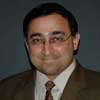 Sarah Dubbs, MD, Clinical Assistant Professor, Department of Emergency Medicine, served as a guest editor for the August 2018 issue of Emergency Medicine Clinics of North America. Dr. Dubbs authored “The Latest Cancer Agents and Their Complications” and “Rapid Fire: Tumor Lysis Syndrome;” and co-authored “Rapid Fire: Central Nervous System Emergencies” and “Rapid Fire: Pericardial Effusion and Tamponade,” with Akilesh Honasoge, MD, MA, Third-year Resident, Department of Emergency Medicine and Internal Medicine. Amal Mattu, MD, Professor, also from the Department of Emergency Medicine, continues as the consulting editor for this journal and, in that role, wrote the preface for this issue.
Sarah Dubbs, MD, Clinical Assistant Professor, Department of Emergency Medicine, served as a guest editor for the August 2018 issue of Emergency Medicine Clinics of North America. Dr. Dubbs authored “The Latest Cancer Agents and Their Complications” and “Rapid Fire: Tumor Lysis Syndrome;” and co-authored “Rapid Fire: Central Nervous System Emergencies” and “Rapid Fire: Pericardial Effusion and Tamponade,” with Akilesh Honasoge, MD, MA, Third-year Resident, Department of Emergency Medicine and Internal Medicine. Amal Mattu, MD, Professor, also from the Department of Emergency Medicine, continues as the consulting editor for this journal and, in that role, wrote the preface for this issue.
 Reha Erzurumlu, PhD, Professor, Department of Anatomy and Neurobiology, was a co-author on “Development of Tactile Sensory Circuits in the CNS,” published in a special issue of Current Opinion in Neurobiology on June 13, 2018.
Reha Erzurumlu, PhD, Professor, Department of Anatomy and Neurobiology, was a co-author on “Development of Tactile Sensory Circuits in the CNS,” published in a special issue of Current Opinion in Neurobiology on June 13, 2018.
 Jeffrey Galvin, MD, Professor and Charles White, MD, Professor, both from the Department of Diagnostic Radiology and Nuclear Medicine, were among the co-authors of “Radiologist Performance in the Detection of Pulmonary Embolism: Features that Favor Correct Interpretation and Risk Factors for Errors,” published in the Journal of Thoracic Imaging on August 23, 2018.
Jeffrey Galvin, MD, Professor and Charles White, MD, Professor, both from the Department of Diagnostic Radiology and Nuclear Medicine, were among the co-authors of “Radiologist Performance in the Detection of Pulmonary Embolism: Features that Favor Correct Interpretation and Risk Factors for Errors,” published in the Journal of Thoracic Imaging on August 23, 2018.
 Rao Gullapalli, PhD, MBA, Professor; Jade Wong, MD, Professor; and Steven Roys, MS, Research Associate; all from the Department of Diagnostic Radiology and Nuclear Medicine; Warren D’Souza, PhD, MBA, Professor; Gazi Daud Iqbal, PhD, Postdoctoral Fellow; and Hao Howard Zhang, PhD, Assistant Professor; all from the Department of Radiation Oncology; Michael Naslund, MD, Professor, Department of Surgery; and John Papadimitrou, MD, PhD, Professor, Department of Pathology, were among the authors of “A Supervised Learning Tool for Prostate Cancer Foci Detection and Aggressiveness Identification Using Multiparametric Magnetic Resonance Imaging/Magnetic Resonance Spectroscopy Imaging,” e-published in Cancer Informatics on
July 10, 2018.
Rao Gullapalli, PhD, MBA, Professor; Jade Wong, MD, Professor; and Steven Roys, MS, Research Associate; all from the Department of Diagnostic Radiology and Nuclear Medicine; Warren D’Souza, PhD, MBA, Professor; Gazi Daud Iqbal, PhD, Postdoctoral Fellow; and Hao Howard Zhang, PhD, Assistant Professor; all from the Department of Radiation Oncology; Michael Naslund, MD, Professor, Department of Surgery; and John Papadimitrou, MD, PhD, Professor, Department of Pathology, were among the authors of “A Supervised Learning Tool for Prostate Cancer Foci Detection and Aggressiveness Identification Using Multiparametric Magnetic Resonance Imaging/Magnetic Resonance Spectroscopy Imaging,” e-published in Cancer Informatics on
July 10, 2018.
 Jon Hirshon, MD, MPH, PhD, Professor, Departments of Emergency Medicine and Epidemiology & Public Health, participated in a research collaboration between Duke University Medical Center and Kilimanjaro Christian Medical Center in Moshi, Tanzania. The purpose of this NIH-funded study was to assess attitudes and practices among emergency care providers in Tanzania regarding the use of interventions for their alcohol-abusing patients. The findings will be applied to the design of educational programs for medical personnel and strategies to reduce alcohol consumption among people who seek emergency medical care. Observations from this study were published in the September 2018 issue of Alcohol.
Jon Hirshon, MD, MPH, PhD, Professor, Departments of Emergency Medicine and Epidemiology & Public Health, participated in a research collaboration between Duke University Medical Center and Kilimanjaro Christian Medical Center in Moshi, Tanzania. The purpose of this NIH-funded study was to assess attitudes and practices among emergency care providers in Tanzania regarding the use of interventions for their alcohol-abusing patients. The findings will be applied to the design of educational programs for medical personnel and strategies to reduce alcohol consumption among people who seek emergency medical care. Observations from this study were published in the September 2018 issue of Alcohol.
 Rydhwana Hossain, MD, Assistant Professor; Jean Jeudy, MD, Associate Professor; Aletta Frazier, MD, Clinical Professor; and Charles White, MD, Professor; all from the Department of Diagnostic Radiology and Nuclear Medicine, were among the co-authors of “A Sensible Approach to Diagnosing Cardiac Aneurysms, Pseudoaneurysms and Common Mimickers,” published in the Journal of Thoracic Imaging on August 14, 2018.
Rydhwana Hossain, MD, Assistant Professor; Jean Jeudy, MD, Associate Professor; Aletta Frazier, MD, Clinical Professor; and Charles White, MD, Professor; all from the Department of Diagnostic Radiology and Nuclear Medicine, were among the co-authors of “A Sensible Approach to Diagnosing Cardiac Aneurysms, Pseudoaneurysms and Common Mimickers,” published in the Journal of Thoracic Imaging on August 14, 2018.
 Eldin Jasarevic, PhD, Postdoctoral Fellow, Department of Pharmacology, and Tracy Bale, PhD, Professor, Department of Pharmacology, were lead and corresponding authors of “The Maternal Vaginal Microbiome Partially Mediates the Effects of Prenatal Stress on Offspring Gut and Hypothalamus,” published in Nature Neuroscience on July 9. Kathleen Morrison, PhD, Postdoctoral Fellow, Department of Pharmacology, and Christopher Howard, Research Specialist, Department of Pharmacology, were also among the co-authors. In addition, Dr. Bale was corresponding author on “Placental H3K27me3 Establishes Female Resilience to Prenatal Insults,” published in Nature Communications on July 2, 2018.
Eldin Jasarevic, PhD, Postdoctoral Fellow, Department of Pharmacology, and Tracy Bale, PhD, Professor, Department of Pharmacology, were lead and corresponding authors of “The Maternal Vaginal Microbiome Partially Mediates the Effects of Prenatal Stress on Offspring Gut and Hypothalamus,” published in Nature Neuroscience on July 9. Kathleen Morrison, PhD, Postdoctoral Fellow, Department of Pharmacology, and Christopher Howard, Research Specialist, Department of Pharmacology, were also among the co-authors. In addition, Dr. Bale was corresponding author on “Placental H3K27me3 Establishes Female Resilience to Prenatal Insults,” published in Nature Communications on July 2, 2018.
 Gaurav Jindal, MD, Associate Professor; Timothy Miller, MD, Assistant Professor; Rong Chen, PhD, Assistant Professor; and Dheeraj Gandhi, MBBS, Professor; all from the Department of Diagnostic Radiology and Nuclear Medicine, were among the co-authors of “Functional Independence After Stroke Thrombectomy Using Thrombolysis in Cerebral Infarction Grade 2c, a New Aim of Successful Revascularization,” published in World Neurosurgery on August 10, 2018.
Gaurav Jindal, MD, Associate Professor; Timothy Miller, MD, Assistant Professor; Rong Chen, PhD, Assistant Professor; and Dheeraj Gandhi, MBBS, Professor; all from the Department of Diagnostic Radiology and Nuclear Medicine, were among the co-authors of “Functional Independence After Stroke Thrombectomy Using Thrombolysis in Cerebral Infarction Grade 2c, a New Aim of Successful Revascularization,” published in World Neurosurgery on August 10, 2018.
 Megan Kirk, MD, PGY3; Leen Ablaihed, MBBS, MHA, Clinical Instructor; Zachary Dezman, MD, MS, MS, Assistant Professor; and Laura Bontempo, MD, MEd, Assistant Professor; all from the Department of Emergency Medicine, were authors of “65-Year-Old Female with Cardiac Arrest and Return of Spontaneous Circulation,” published in the July 2018 issue of Clinical Practice and Cases in Emergency Medicine.
Megan Kirk, MD, PGY3; Leen Ablaihed, MBBS, MHA, Clinical Instructor; Zachary Dezman, MD, MS, MS, Assistant Professor; and Laura Bontempo, MD, MEd, Assistant Professor; all from the Department of Emergency Medicine, were authors of “65-Year-Old Female with Cardiac Arrest and Return of Spontaneous Circulation,” published in the July 2018 issue of Clinical Practice and Cases in Emergency Medicine.
 Anthony Koroulakis, MD, Resident, and Manuj Agarwal, MD, Assistant Professor, both from the Department of Radiation Oncology, were the authors of “Anatomy, Lymphatic Drainage, Neck,” published in StatPearls on July 5, 2018.
Anthony Koroulakis, MD, Resident, and Manuj Agarwal, MD, Assistant Professor, both from the Department of Radiation Oncology, were the authors of “Anatomy, Lymphatic Drainage, Neck,” published in StatPearls on July 5, 2018.
 Theodore Manson, MD, Associate Professor; Marcus Sciadini, MD, Professor; Jason Nascone, MD, Associate Professor; and Robert O’Toole, MD, the Hansjörg Wyss Medical Foundation Endowed Professor in Orthopaedic Trauma; all from the Department of Orthopaedics, were among the co-authors of “Predictors of Unplanned Reoperation After Operative Treatment of Pelvic Ring Injuries,” published in the July 2018 issue of the Journal of Orthopaedic Trauma. Drs. Mason, Sciadini, Nascone, and O’Toole were also among the co-authors of “Risk Factors for Early Reoperation After Operative Treatment of Acetabular Fractures,” published in the July 2018 issue of Journal of Orthopaedic Trauma.
Theodore Manson, MD, Associate Professor; Marcus Sciadini, MD, Professor; Jason Nascone, MD, Associate Professor; and Robert O’Toole, MD, the Hansjörg Wyss Medical Foundation Endowed Professor in Orthopaedic Trauma; all from the Department of Orthopaedics, were among the co-authors of “Predictors of Unplanned Reoperation After Operative Treatment of Pelvic Ring Injuries,” published in the July 2018 issue of the Journal of Orthopaedic Trauma. Drs. Mason, Sciadini, Nascone, and O’Toole were also among the co-authors of “Risk Factors for Early Reoperation After Operative Treatment of Acetabular Fractures,” published in the July 2018 issue of Journal of Orthopaedic Trauma.
 Andrea Meredith, PhD, Associate Professor, Department of Physiology, together with collaborators at The University of Texas MD Anderson Cancer Center in Houston, co-authored “Glutamate-Activated BK Channel Complexes Formed with NMDA Receptors,” published in The Proceedings of the National Academy of Sciences on September 4, 2018.
Andrea Meredith, PhD, Associate Professor, Department of Physiology, together with collaborators at The University of Texas MD Anderson Cancer Center in Houston, co-authored “Glutamate-Activated BK Channel Complexes Formed with NMDA Receptors,” published in The Proceedings of the National Academy of Sciences on September 4, 2018.
 Michael Miller, BA, Student, University of Maryland School of Medicine; Lindsay O’Meara, CRNP, Department of Surgery; Lindsay Hessler, MD, Chief Resident, Department of Surgery; Paulesh Shah, MD, Assistant Professor, Department of Surgery; and Daniel Haase, MD, Assistant Professor, Department of Emergency Medicine, published a case report, “Woman with Abdominal Pain,” in the Images in Emergency Medicine section of the September 2018 issue of Annals of Emergency Medicine.
Michael Miller, BA, Student, University of Maryland School of Medicine; Lindsay O’Meara, CRNP, Department of Surgery; Lindsay Hessler, MD, Chief Resident, Department of Surgery; Paulesh Shah, MD, Assistant Professor, Department of Surgery; and Daniel Haase, MD, Assistant Professor, Department of Emergency Medicine, published a case report, “Woman with Abdominal Pain,” in the Images in Emergency Medicine section of the September 2018 issue of Annals of Emergency Medicine.
 Siamak Moayedi, MD, Assistant Professor; Michael Witting, MD, MS, Professor; Jon Mark Hirshon, MD, PhD, Professor; and Stephen Schenkel, MD, MPP, Associate Professor; all from the Department of Emergency Medicine, were authors of “Prospective, Randomized Controlled Comparison of a Flash-Tip Catheter and a Traditional Intravenous Catheter in an Urban Emergency Department,” in the July 2018 issue of The Journal of Vascular Access. Nicholas George and Alise Burke, both students at the University of Maryland School of Medicine, were co-authors of the article.
Siamak Moayedi, MD, Assistant Professor; Michael Witting, MD, MS, Professor; Jon Mark Hirshon, MD, PhD, Professor; and Stephen Schenkel, MD, MPP, Associate Professor; all from the Department of Emergency Medicine, were authors of “Prospective, Randomized Controlled Comparison of a Flash-Tip Catheter and a Traditional Intravenous Catheter in an Urban Emergency Department,” in the July 2018 issue of The Journal of Vascular Access. Nicholas George and Alise Burke, both students at the University of Maryland School of Medicine, were co-authors of the article.
 Jason Molitoris, MD, PhD, Assistant Professor, Department of Radiation Oncology, was among the authors of “Effect of Targeted Therapies on Prognostic Factors, Patterns of Care, and Survival in Patients with Renal Cell Carcinoma and Brain Metastases,” published in the International Journal of Radiation Oncology Biology Physics on July 15, 2018.
Jason Molitoris, MD, PhD, Assistant Professor, Department of Radiation Oncology, was among the authors of “Effect of Targeted Therapies on Prognostic Factors, Patterns of Care, and Survival in Patients with Renal Cell Carcinoma and Brain Metastases,” published in the International Journal of Radiation Oncology Biology Physics on July 15, 2018.
 Michael Naslund, MD, Professor, Department of Surgery; Adeel Kaiser, MD, Assistant Professor, Department of Radiation Oncology; and Mohummad Minhaj Siddiqui, MD, Associate Professor, Department of Surgery, were among the authors of “Evaluation of Cancer-Specific Mortality with Surgery Versus Radiation as Primary Therapy for Localized High-Grade Prostate Cancer in Men Younger Than 60 Years Old,” e-published in the Journal of Urology on July 27, 2018.
Michael Naslund, MD, Professor, Department of Surgery; Adeel Kaiser, MD, Assistant Professor, Department of Radiation Oncology; and Mohummad Minhaj Siddiqui, MD, Associate Professor, Department of Surgery, were among the authors of “Evaluation of Cancer-Specific Mortality with Surgery Versus Radiation as Primary Therapy for Localized High-Grade Prostate Cancer in Men Younger Than 60 Years Old,” e-published in the Journal of Urology on July 27, 2018.
 Danilo Perrotti, MD, PhD, Professor, and Giovannino Silvestri, PhD, Research Associate, both from Department of Medicine, were among the co-authors of “BCR-ABL1 Mediated MiR-150 Downregulation Through MYC Contributed to Myeloid Differentiation Block and Drug Resistance in Chronic Myeloid Leukemia,” published in Haematologica on July 26, 2018.
Danilo Perrotti, MD, PhD, Professor, and Giovannino Silvestri, PhD, Research Associate, both from Department of Medicine, were among the co-authors of “BCR-ABL1 Mediated MiR-150 Downregulation Through MYC Contributed to Myeloid Differentiation Block and Drug Resistance in Chronic Myeloid Leukemia,” published in Haematologica on July 26, 2018.
 Yannick Poirier, PhD, Assistant Professor, Department of Radiation Oncology, was among the authors of “Radiation Therapy for Deep Periocular Cancer Treatments When Protons are Unavailable: Is Combining Electrons and Orthovoltage Therapy Beneficial?” e-published in the Journal of Radiation Research on July 25, 2018.
Yannick Poirier, PhD, Assistant Professor, Department of Radiation Oncology, was among the authors of “Radiation Therapy for Deep Periocular Cancer Treatments When Protons are Unavailable: Is Combining Electrons and Orthovoltage Therapy Beneficial?” e-published in the Journal of Radiation Research on July 25, 2018.
 William Regine, MD, FACR, FACRO, the Isadore & Fannie Schneider Foxman Chair and Professor, Department of Radiation Oncology, was the senior author of “Carl Mansfield, MD, ScD, FACR, FASTRO (1928–2018),” published in the International Journal of Radiation Oncology Biology Physics on July 15, 2018.
William Regine, MD, FACR, FACRO, the Isadore & Fannie Schneider Foxman Chair and Professor, Department of Radiation Oncology, was the senior author of “Carl Mansfield, MD, ScD, FACR, FASTRO (1928–2018),” published in the International Journal of Radiation Oncology Biology Physics on July 15, 2018.
 Charles Simone, II, MD, Associate Professor, Department of Radiation Oncology, was the senior author of “Exploratory Analysis Using Machine Learning to Predict for Chest Wall Pain in Patients with Stage I Non-Small-Cell Lung Cancer Treated with Stereotactic Body Radiation Therapy,” e-published in the Journal of Applied Clinical Medical Physics on July 10, 2018. In the same journal, Dr. Simone was also among the authors of “Validation and Clinical Implementation of an Accurate Monte Carlo Code for Pencil Beam Scanning Proton Therapy,” e-published on July 30, 2018. In addition, Dr. Simone was among the authors of “A Preclinical Model to Investigate the Role of Surgically Induced Inflammation in Tumor Responses to Intraoperative Photodynamic Therapy,” published in the July 2018 issue of Lasers in Surgery and Medicine. Separately, Dr. Simone was among the authors of “Acute Hospital Encounters in Cancer Patients Treated with Definitive Radiation Therapy,” published in the International Journal of Radiation Oncology, Biology, Physics on July 15, 2018. Additionally, Dr. Simone was among the authors of “Chemoradiotherapy Versus Chemotherapy Alone for Unresected Intrahepatic Cholangiocarcinoma: Practice Patterns and Outcomes from the National Cancer Data Base,” published in the June 2018 issue of the Journal of Gastrointestinal Oncology.
Charles Simone, II, MD, Associate Professor, Department of Radiation Oncology, was the senior author of “Exploratory Analysis Using Machine Learning to Predict for Chest Wall Pain in Patients with Stage I Non-Small-Cell Lung Cancer Treated with Stereotactic Body Radiation Therapy,” e-published in the Journal of Applied Clinical Medical Physics on July 10, 2018. In the same journal, Dr. Simone was also among the authors of “Validation and Clinical Implementation of an Accurate Monte Carlo Code for Pencil Beam Scanning Proton Therapy,” e-published on July 30, 2018. In addition, Dr. Simone was among the authors of “A Preclinical Model to Investigate the Role of Surgically Induced Inflammation in Tumor Responses to Intraoperative Photodynamic Therapy,” published in the July 2018 issue of Lasers in Surgery and Medicine. Separately, Dr. Simone was among the authors of “Acute Hospital Encounters in Cancer Patients Treated with Definitive Radiation Therapy,” published in the International Journal of Radiation Oncology, Biology, Physics on July 15, 2018. Additionally, Dr. Simone was among the authors of “Chemoradiotherapy Versus Chemotherapy Alone for Unresected Intrahepatic Cholangiocarcinoma: Practice Patterns and Outcomes from the National Cancer Data Base,” published in the June 2018 issue of the Journal of Gastrointestinal Oncology.
 Melissa Vyfhuis, MD, PhD, Resident; Nasarache Onyeuku, MD, Resident; Sina Mossahebi, PhD, Assistant Professor; Neha Amin, MD, Assistant Professor; Pranshu Mohindra, MD, MBBS, Assistant Professor; and Charles Simone II, MD, Associate Professor; all from the Department of Radiation Oncology, were among the authors of “Advances in Proton Therapy in Lung Cancer,” published in Therapeutic Advances in Respiratory Disease on July 17, 2018.
Melissa Vyfhuis, MD, PhD, Resident; Nasarache Onyeuku, MD, Resident; Sina Mossahebi, PhD, Assistant Professor; Neha Amin, MD, Assistant Professor; Pranshu Mohindra, MD, MBBS, Assistant Professor; and Charles Simone II, MD, Associate Professor; all from the Department of Radiation Oncology, were among the authors of “Advances in Proton Therapy in Lung Cancer,” published in Therapeutic Advances in Respiratory Disease on July 17, 2018.
 Tristan Weir, MD, and Timothy Costales, MD, Residents; Ebrahim Paryavi, MD, MPH, Assistant Professor; Nathan O’Hara, MHA, Research Associate; Daniel Gelb, MD, Professor; Eugene Koh, MD, PhD, Associate Professor; and Steven Ludwig, MD, Professor; all from the Department of Orthopaedics, were among the co-authors of “Postoperative Deep Vein Thrombosis, Pulmonary Embolism, and Myocardial Infarction: Complications After Therapeutic Anticoagulation in the Patient with Spine Trauma,” published in the July 2018 issue of Spine.
Tristan Weir, MD, and Timothy Costales, MD, Residents; Ebrahim Paryavi, MD, MPH, Assistant Professor; Nathan O’Hara, MHA, Research Associate; Daniel Gelb, MD, Professor; Eugene Koh, MD, PhD, Associate Professor; and Steven Ludwig, MD, Professor; all from the Department of Orthopaedics, were among the co-authors of “Postoperative Deep Vein Thrombosis, Pulmonary Embolism, and Myocardial Infarction: Complications After Therapeutic Anticoagulation in the Patient with Spine Trauma,” published in the July 2018 issue of Spine.
 Michael White, PhD, and Brian Mathur, PhD, Assistant Professor, both from the Department of Pharmacology, were among the co-authors of “Claustrum Circuit Components for Top-Down Input Processing and Cortical Broadcast” and “Frontal Cortical Control of Posterior Sensory and Association Cortices Through the Claustrum,” published in the August 2018 and July 2018 issues of Brain Structure and Function, respectively.
Michael White, PhD, and Brian Mathur, PhD, Assistant Professor, both from the Department of Pharmacology, were among the co-authors of “Claustrum Circuit Components for Top-Down Input Processing and Cortical Broadcast” and “Frontal Cortical Control of Posterior Sensory and Association Cortices Through the Claustrum,” published in the August 2018 and July 2018 issues of Brain Structure and Function, respectively.
